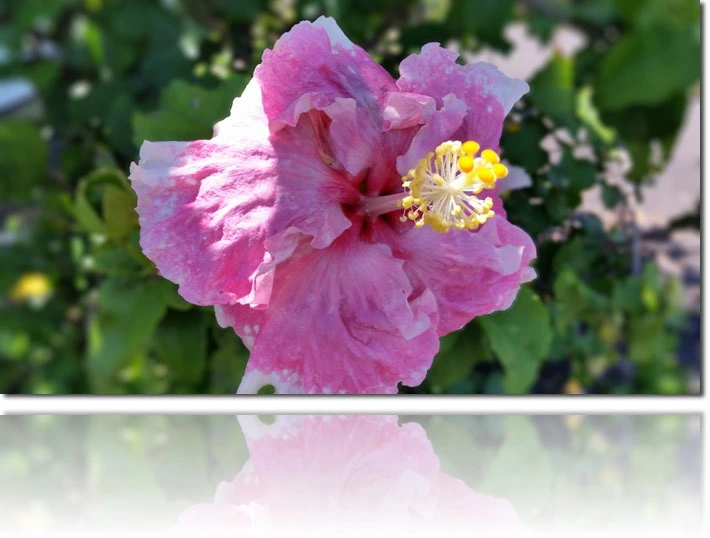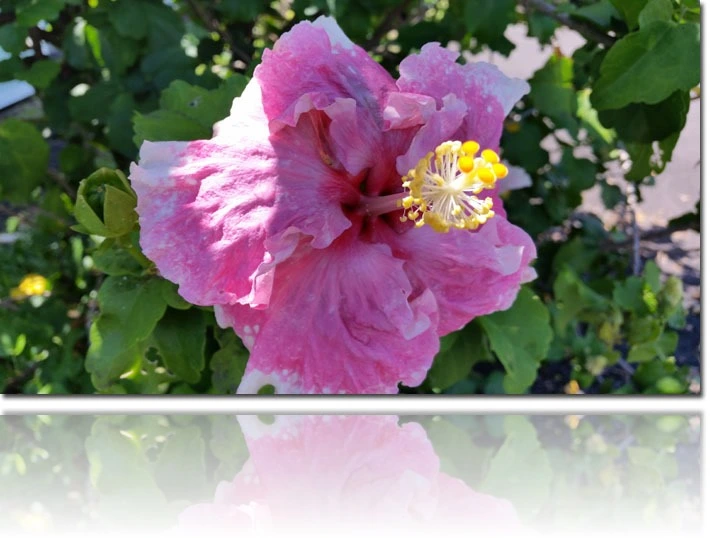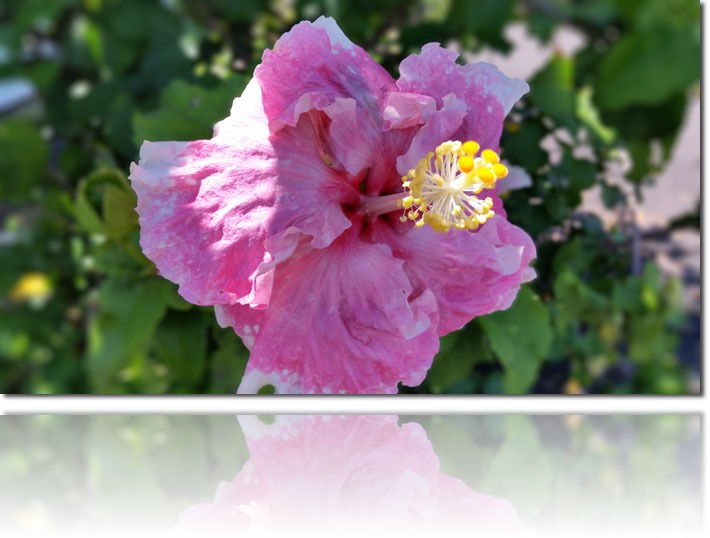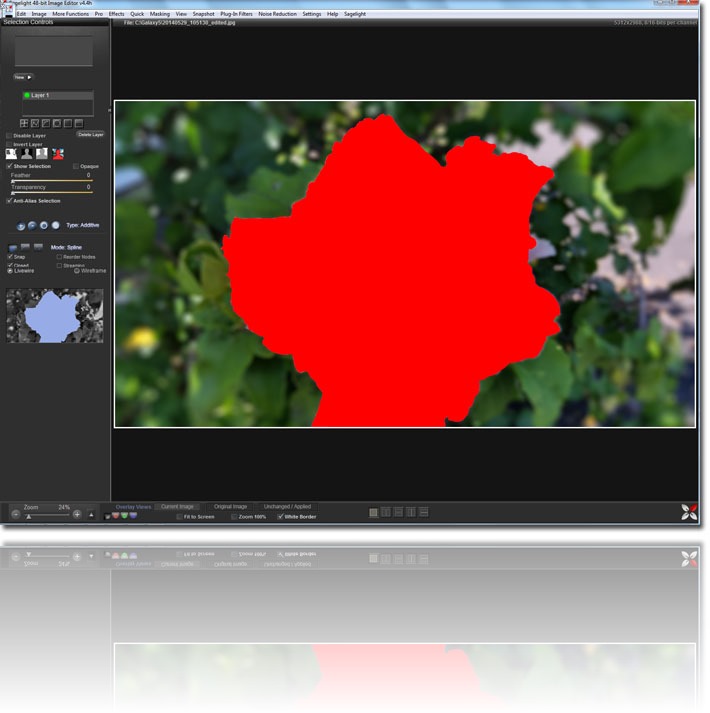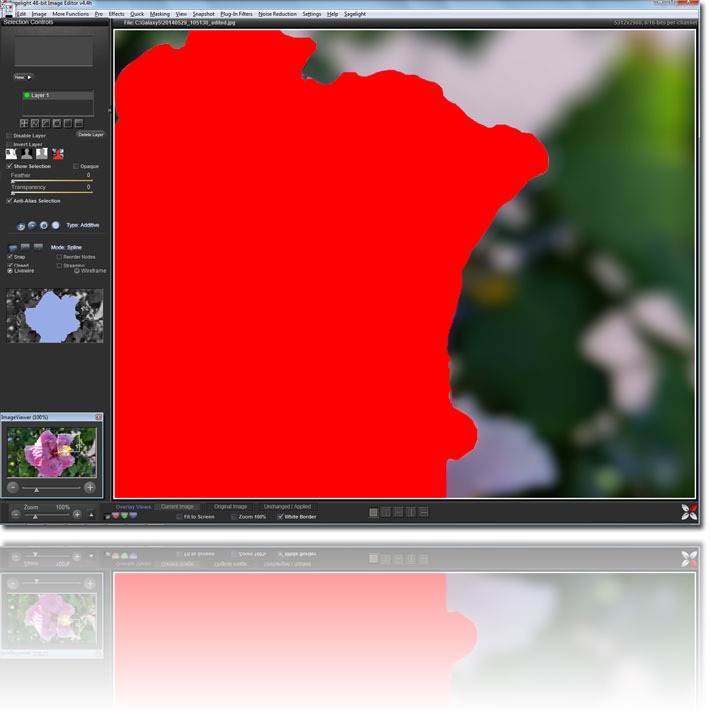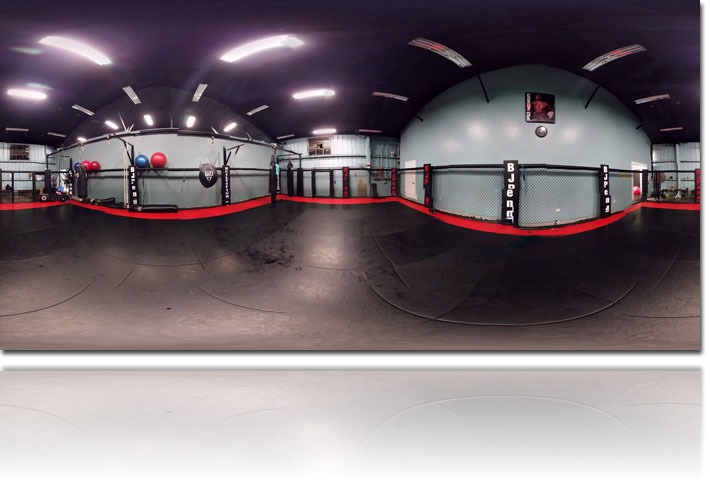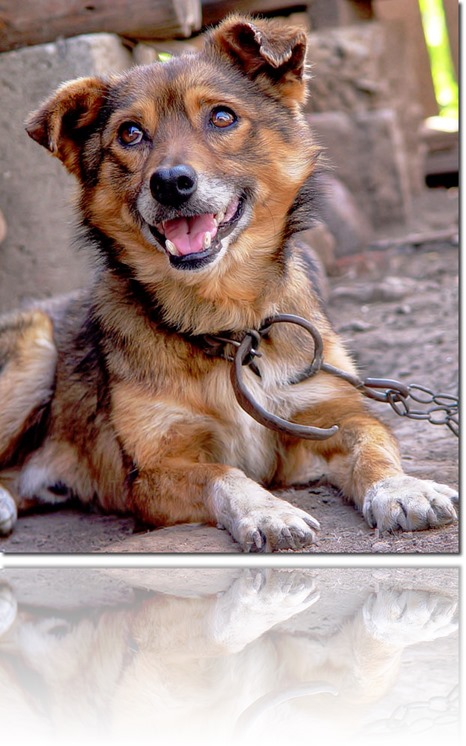
The Vivid HDR Preset is a preset you can load into Sagelight. Just download it and then use it on any image in the Quick Edit Mode. See below for details on how to load the presets and use them in Sagelight.
Natural HDR and the Light Blender
The Light Blender in Sagelight is a very powerful tool and is a great for natural HDR results. Where other HDR functions (including those in Sagelight) can give an HDR look-and-feel, the results can sometimes be harsh and look more artistic than realistic (depending on how you use it, anyway).
The Light Blender is rooted in a true HDR base algorithm, bringing out the range of your image in a way that looks more realistic. The Light Blender’s main purpose is to bring out the shadows and bring down the highlights to give a good, broad range to your image, reducing severe highlights and shadows.
 (Before and After Image of Light Blender Natural Vivid Preset)
(Before and After Image of Light Blender Natural Vivid Preset)
Natural HDR, in General
I have been working on many ‘natural’ (i.e. realistic-looking) HDR aspects of Sagelight lately, and the release of the Vivid HDR preset is one of many elements I am adding to Sagelight, and the first of a number of presets for the Light Blender to work with natural-looking HDR.
With the latest efforts in development and cameras these days, HDR – that is, natural HDR – is a very big component of digital photography. New cameras have HDR modes, and even for those that don’t, using a single frame (instead of 3 or more) — even a JPEG — as a source is now completely realistic.
The idea of HDR, natural or artistic, is no longer limited to those with the right expertise, equipment or specialized software. This really has a lot to do with the growth of technology in image editors like Sagelight, but also in the sheer quality of the images being returned by today’s cameras.
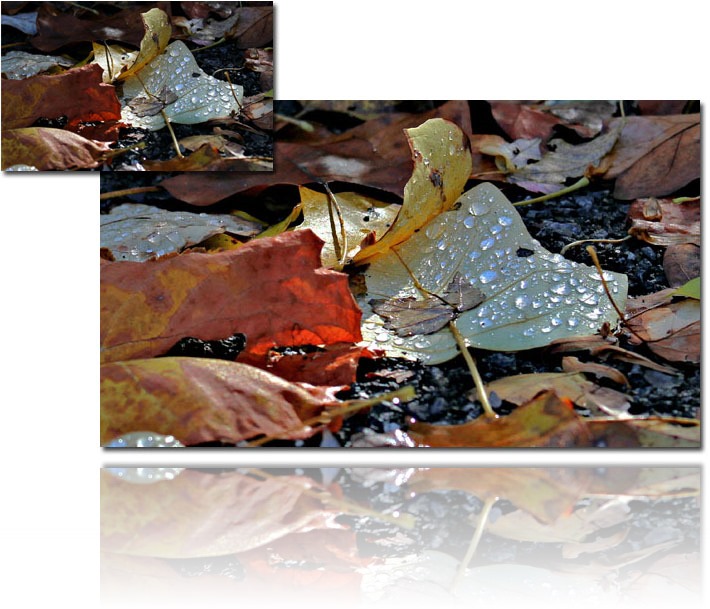
(Another before-and-after example of the Vivid HDR Preset)
Full Range of Light and Colors
When used correctly, a natural HDR effect can bring out the image the way the eye sees it. Our eyes continually adjust to the light, and we tend to see the shadows and highlights, where the camera sees more washed out highlights and darker shadows.
There is also the element of the harshness of the light on the subject, depending on the angle of the sun or other light sources. Natural HDR can take that mid-afternoon shot, with its bright, white-ish highlights and deep shadows, and turn it into a shot that has the color and range of a late afternoon or early morning shot!
The Light Blender Vivid HDR Preset
The two above examples are basic before-and-after examples of using the Vivid HDR Preset.
This preset works by bringing out the range of your image. You may then change many different settings, including the curve/equalizers.
Getting Halo-Free Results
A big part of bringing out the dynamic range in an image (especially around areas of contrast and shadows) is halos – those darkened or light areas that tend to make a picture look unnatural.
The Vivid HDR preset works without creating halos, but subsequent definition and focus levels can create small halos, sometimes visible. There is a way to work with halos, and I will outline these later in this article. See the “Getting Halo-Free Results Continued” section below.
Downloading the Presets
To download the presets, download the following .SLP files. You can place them anywhere on your system, and then load them through the Quick Edit Mode Preset Function.
Using the Light Blender HDR Preset
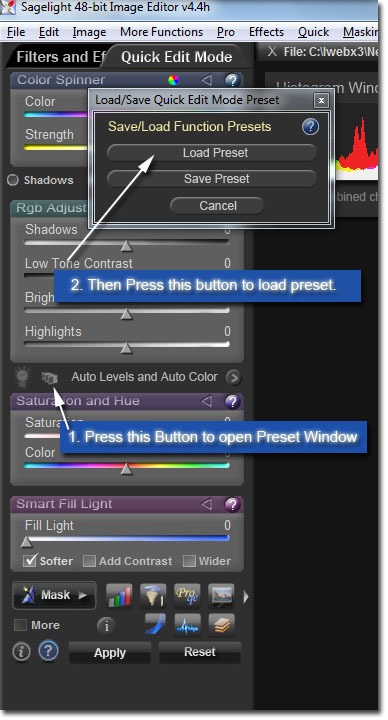
To use the preset, simply press the Preset button in the Quick Edit Mode (Step 1). Then press “Load Preset” (Step 2).
One you press “Load Preset” go to the directory where you put or downloaded the presets. Then you will see a screen similar to this:
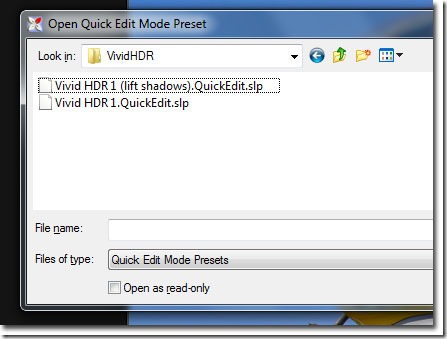
Simply click on the preset (i.e. “Vivid HDR 1”), and you will see your image change to reflect the range of your image.
There is also the “Vivid HDR 1 (lift shadows)” preset, but lets stick with “Vivid HDR 1” for now.
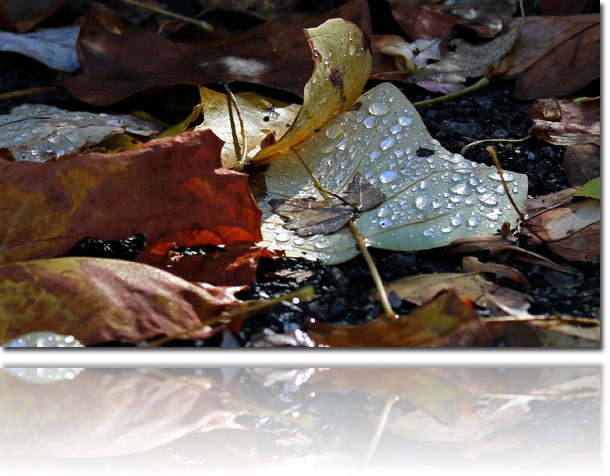
Using the Preset
Let’s take the above picture of the leaves as an example. Follow the steps outlined above.
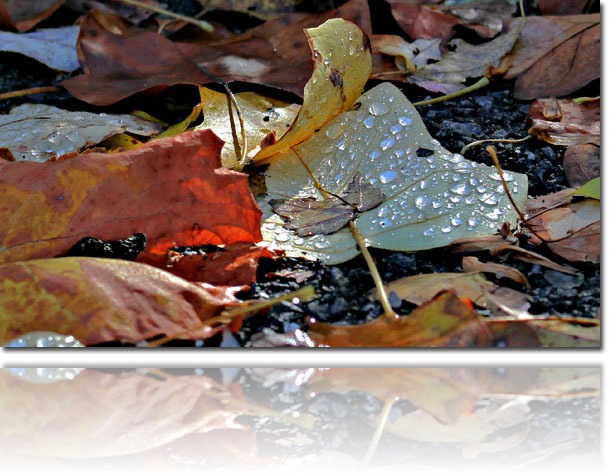
When you load the Vivid HDR curve, this is the result. You don’t really need to do anything else. You can then use the Vibrance and other controls.
Use the Apply Button and Smart Light
Sagelight is non-destructive to your image in this process. Sagelight is also based on re-using controls. You can then press the Apply button to lock these changes, so you can do more with your image than you could with just one set of controls.
After this, you can use many other controls to really bring out the light in your image. The best control to use after using the Vivid HDR Preset is the Smart Light (the Light Symbol in the bottom-left of the Quick Edit Mode). Inside the Smart Light, try using the Midtone Contrast with the Highlight Slider.
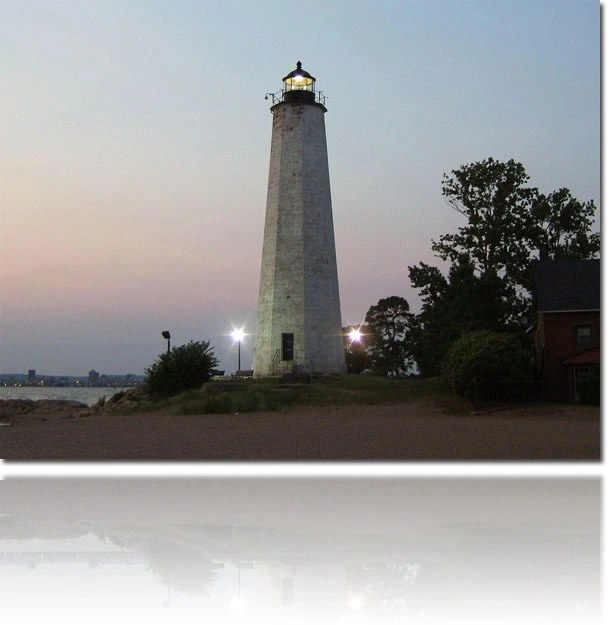
Another Example
The first example with the leaves worked out great. There really wasn’t much to do with it. This isn’t true for all images. For example, the image above (the Lighthouse) is dark.
Load the Vivid HDR preset with this image, and here is the result:
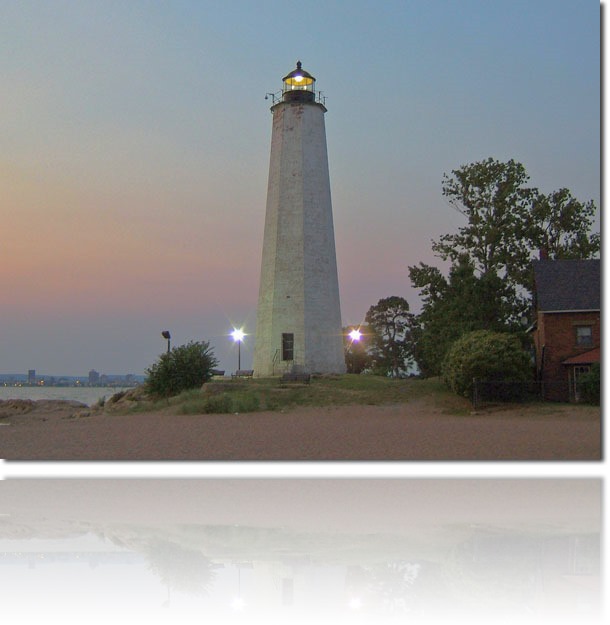
You can see that the range has been brought out, both by deepening the highlights and bringing up the shadows. But, it’s still a little dark.
I can get a great image by pressing the Apply Button and using the Smart Light Controls, as suggested above.
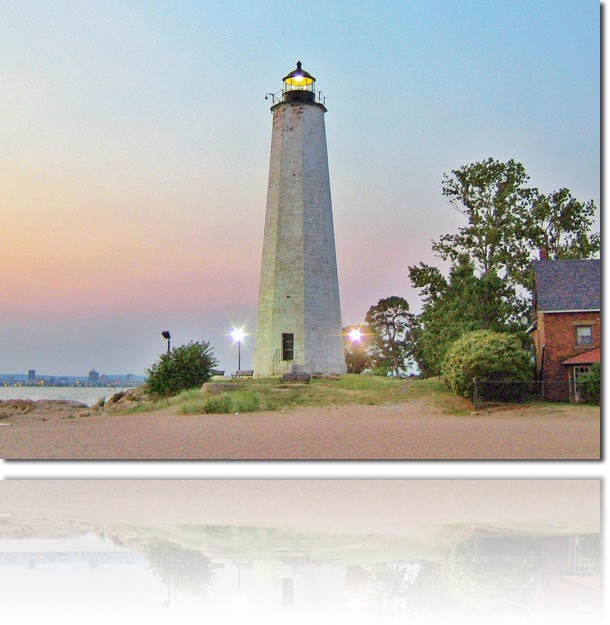
The above is the Vivid HDR preset after I used the Apply Button and a single pass in the Smart Light. I can then fine-tune the image to get what I want, such as contrast, more color, and so-forth.
If you look very closely, you can see a feint trace of haloing in the trees, and possibly on the sides of the lighthouse. These are barely noticeable, but sometimes can show up if you do further editing.
Most of the time, small halos aren’t a problem and you would only know they are there if you were comparing the image directly to the original.
However, there is a way to work with the Vivid HDR Result that – as other functions are used (such as the Definition controls) – generates no halos whatsoever! See the section below, entitled: Advanced Techniques: Working with the Vivid HDR Result Curve.
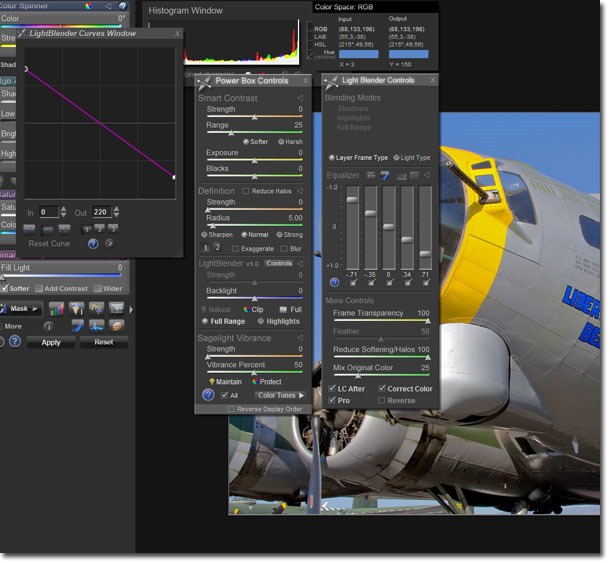
Working with the Result: Using the Light Blender Controls
You can affect the result greatly with just a few tools in the Light Blender and Power Box.
When you load the HDR Vivid Curve, the controls in the screen above show up.
You can dismiss the LightBlender Curves Window – just click it off (it really shouldn’t be showing up; it just does that when the preset has changed the curve, which the Vivid HDR preset does).
The other controls, however, do some great things with the result:
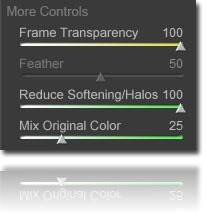
Frame Transparency and Reduce Softening/Halos
These two controls work together for a great effect. Move the Reduce/Softening Halos to increase the feathering – this can add definition and make your image look more natural.
Simultaneously, try sliding the Frame Transparency – this will brighten your image.
When used together, these can create a nice, bright, natural image, even when the initial result doesn’t look the best.
As you move the Frame Transparency Slider, you can also lose definition. Use the Definition Slider to compensate (see more below)
Mix Original Color
When you use the controls, the image can start to look very colorful – sometimes in an unnatural manner, as the new bright shadows have more color than they need. Sometimes this works in the opposite direction, and not enough color is brought out from the image.
Use the Mix Original Color slider to compensate. As you move the slider to the right, less color is added from the original image; as you move the slider to the left, more color is retained.
You can also use the Saturation and Vibrance controls.
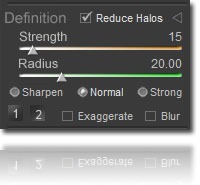
Using the Definition Slider (or avoiding it)
When you use the Vivid HDR preset, the Focus is set to 15 (make sure #2 is pressed; this is the focus, where #1 is the definition and is not set). This is set because the Vivid HDR brings out the dynamic range, which reduces definition.
The Focus Control brings back the definition, but can be at the cost of some slight edging or halos (usually this isn’t the case, and you can set it to 0 and back to 15 to see the difference).
In some cases, you might want to avoid using the Definition and Focus controls until after you’ve edited the image for light and balance.
As you use the other controls (such as the Frame Transparency Slider), you can reduce or increase both the Focus (#2) and Definition (#1) controls to keep or reduce the overall local contrast and definition in your image.
You can use the Equalizer
See Advanced Techniques: Working with the Vivid HDR Result Curve. Below.
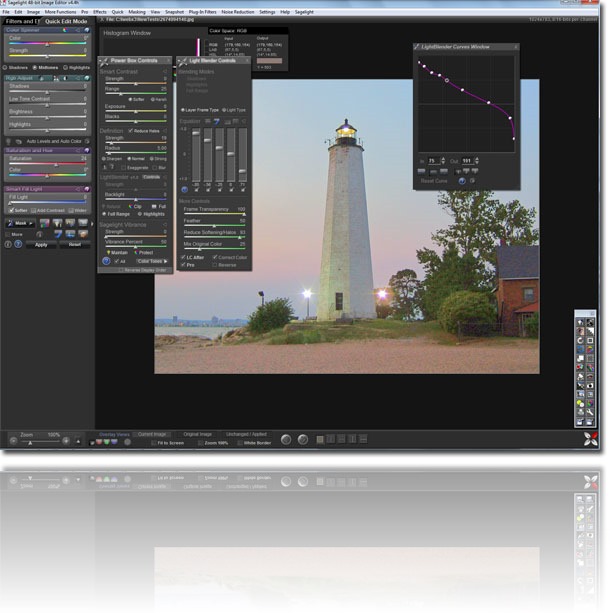
Advanced Techniques: Working with the Vivid HDR Result Curve
(aka Getting Halo-Free Results Continued)
The above shows the screen after you load the Vivid HDR Preset. You can usually ignore the curve and just close the window.
In the example with the Lighthouse above, I showed where I used the Smart Light function just after loading (and applying through the Apply Button) the Vivid HDR Preset. However, this generate dsome very feint halos.
You can adjust the Equalizer or the curve itself (by just grabbing the curve and moving it, or using the mouse-wheel on the curve points for greater accuracy)
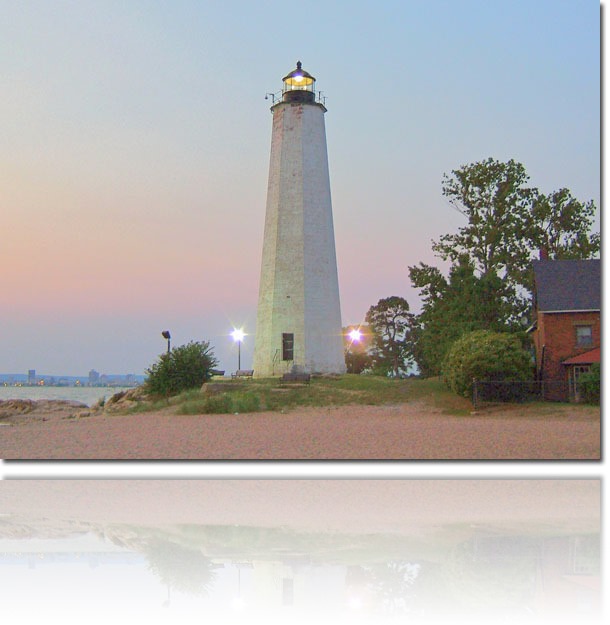
The above is the result adjusting the LightBlender Curve (note that the Focus control in the Power Box was set to 0 to avoid halos). This example is halo-free!
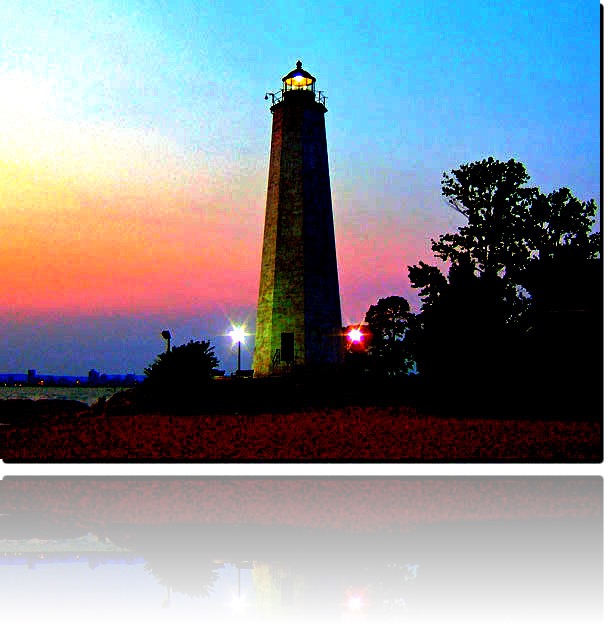
The image above shows that there are now halos in the result image (you would see them if they were there in this augmented image).
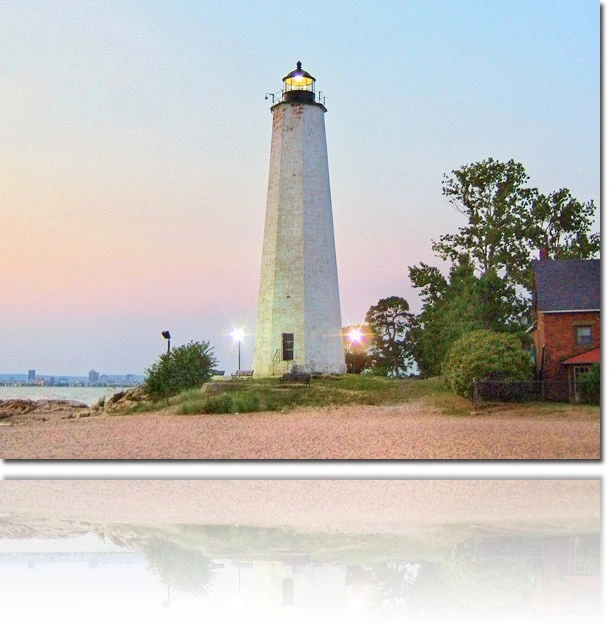
The above is the same image after using the Smart Light Contrast Control, a little HDR, Noise Reduction and the Undo Brush – all still halo-free!
Using “Vivid HDR 1 (lift shadows)” Preset
For some images, you may want to detail the shadows even more. The “Lift Shadows” version of the preset works well for this.
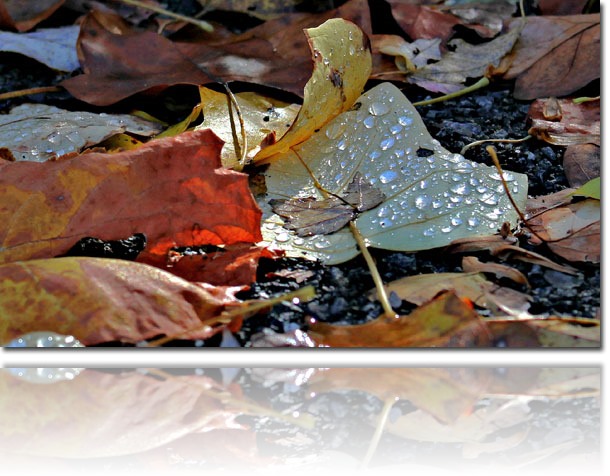
For example, the above image is the result of using the “Vivid HDR 1” preset.
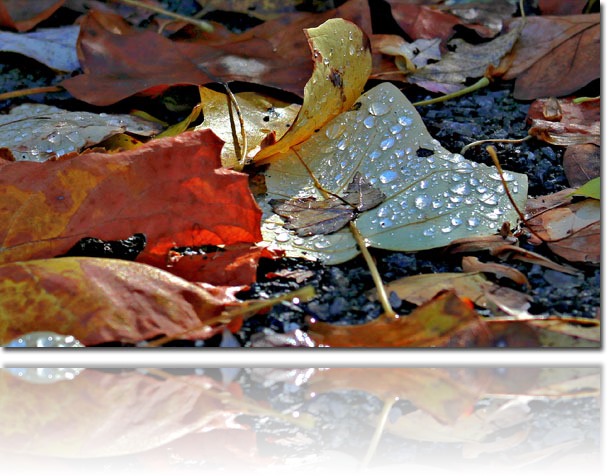
This example is the result of using the Lift Shadows version. If you look closely, you can see more shadow detail in the second image.
On some images, this may make the image too bright in the low shadows – you can just load the “Vivid HDR” preset, or use the left-most equalizer handle to adjust the shadows (or grab the curve in the curve box).
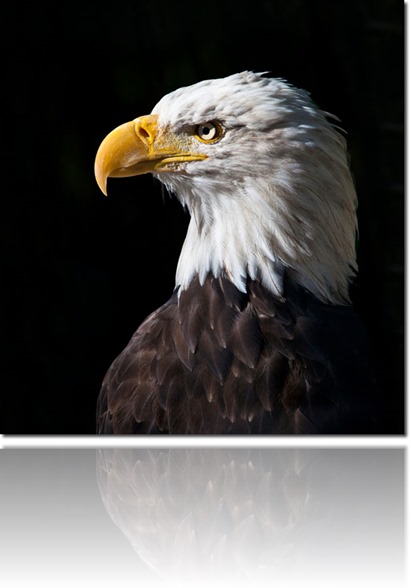
(Original Image)
Restoring Highlights with the Vivid HDR Preset
The Vivid HDR preset can help restore highlights.
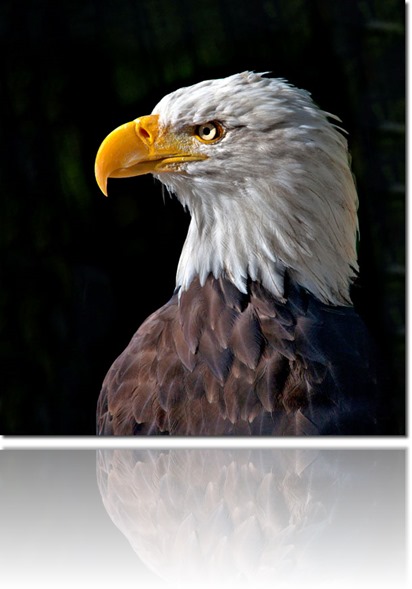
In the result image, you can see much more definition where the highlights were blown out before. The eagle is brighter and more balanced overall.
You can use the controls to add back contrast, add or remove color, and otherwise create the image you want – now with much more definition in the highlights.
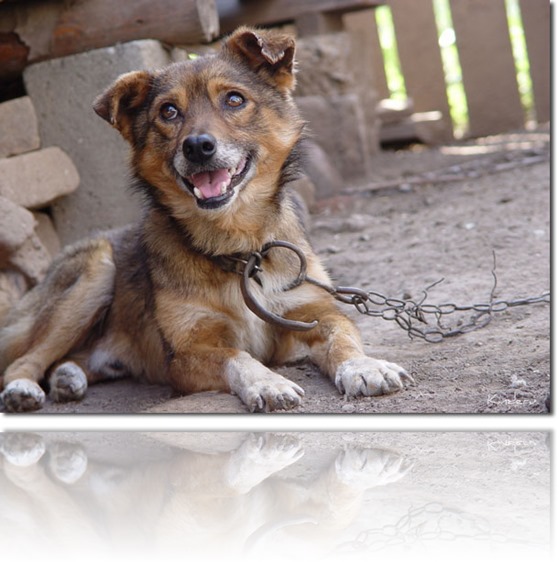
(Original Image)
Vivid HDR is great for Artistic and Natural HDR
The Vivid HDR Preset does a great job of setting up an image for an HDR pass in the HDR Panel or other HDR functions in Sagelight. The result can be a more natural HDR – still artistic and impressive, but not quite as artificial-looking as some HDR.
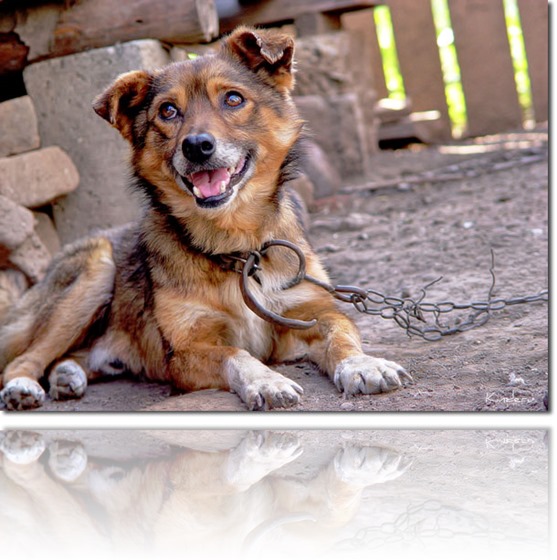
Wit this result, the dog definition as an HDR look, but it also look natural and smooth. A very light pass of NL Wavelet Noise Reduction was also used
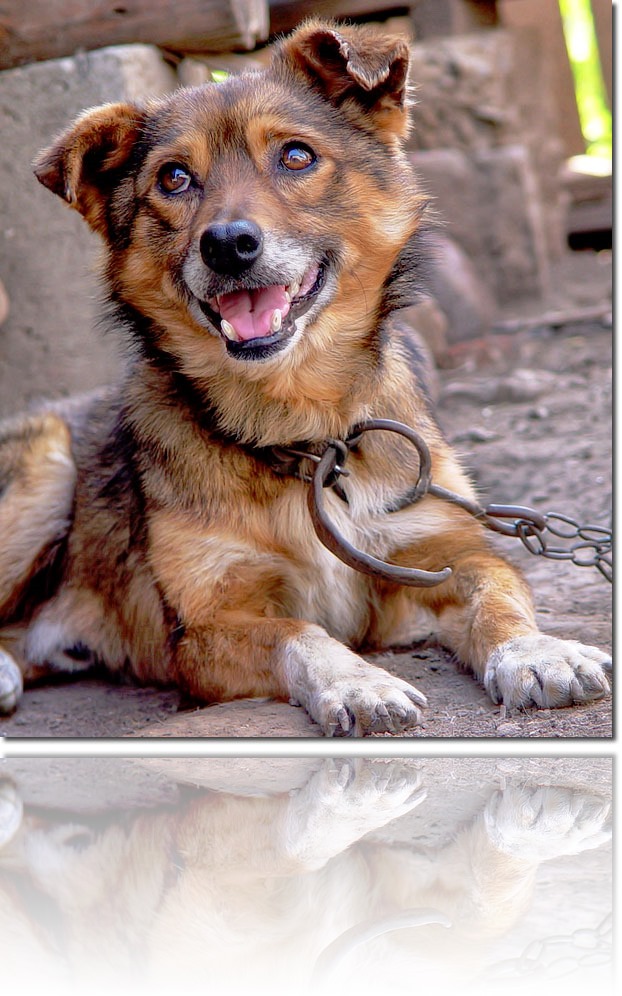
This is a closeup of the HDR image, showing the very high quality and definition of the result!
Keep in mind this is a single-frame HDR image, not multiple exposures.
Conclusion
The Light Blender is, indeed, a very powerful tool. The Vivid HDR Preset just released is a small part of the Light Blender, but shows how much it can do to help your image.
This is the first of a few Light Blender presets to create natural HDR in your image, as well as help create heavier artistic HDR effects that are more artistic but also with a natural look and feel.
The Vivid HDR Preset helps bring out the HDR elements of your image – both shadows and highlights – so you can create a more vibrant picture more easily.
Once the Vivid HDR preset is used, many tasks become much simple – just use the Vibrance and other controls, press the Apply Button and use the Smart Light Control to create a great image.
You can go further and use this as a base for more HDR effects, or mixing your image with the Undo Brush for more localized editing.
You can create different and more compelling results by modifying the Vivid HDR curve and using the Frame Transparency and Halo Reduction Sliders.
This preset will appear in the Light Blender as an inline preset when the UI is updated.
For now, try it out and see what you can do!
Up Next: Light Blender Natural HDR:
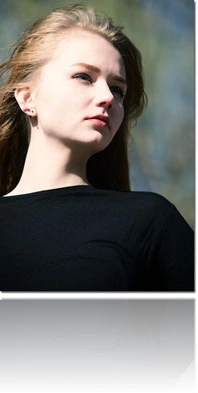
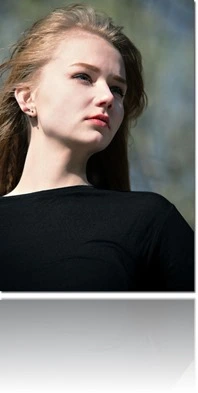
(click on images for larger sizes)
In the next release, a new preset which has a great natural feel to it. The next Light Blender preset release will help you to automatically get very natural HDR effects out of most images – just by loading the preset.




























